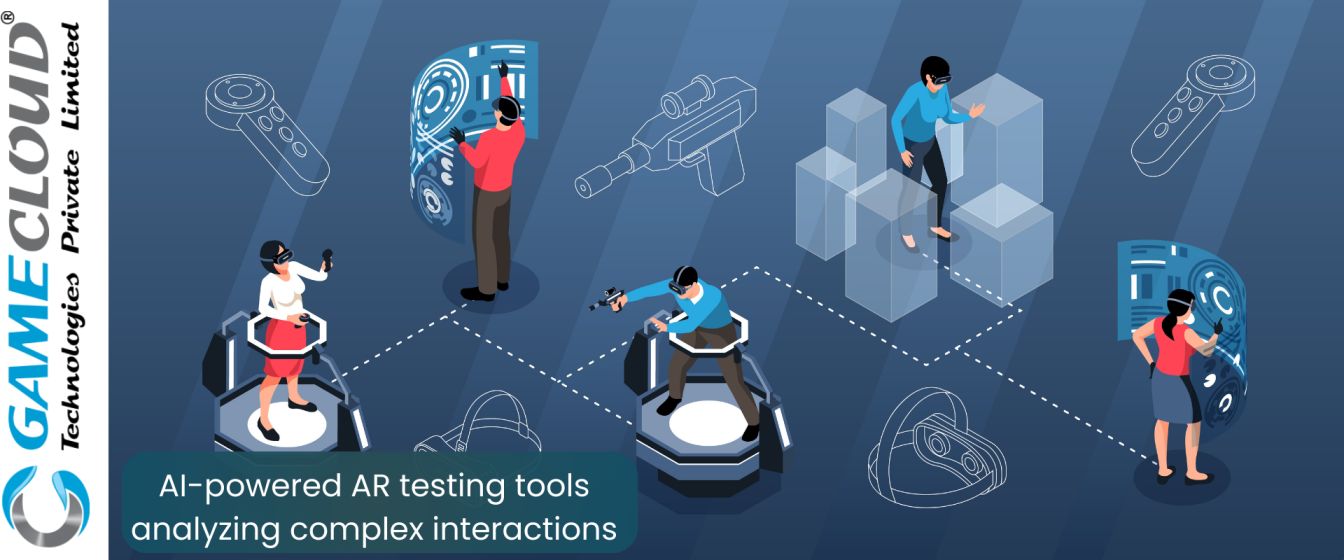
Augmented Reality is rapidly transforming how various industries operate by blending digital elements into the physical world, enhancing user experiences across education, healthcare, retail, and manufacturing. The AR market is projected to reach $50.9 billion by 2026, highlighting its expanding role in technology-driven environments.
However, the complexity of interactions within AR environments, such as real-time object recognition, spatial awareness, and user interactions, presents significant challenges. These interactions require precise and efficient testing methods to ensure a seamless user experience. AI-powered AR testing tools have emerged as a solution to these challenges. These tools leverage AI to automate and enhance the testing process, making it possible to analyze and validate the intricate interactions in AR applications more effectively.
By integrating AI with AR testing, developers can achieve higher accuracy and efficiency, paving the way for more robust and user-friendly AR applications. This combination addresses the inherent complexities of AR environments, ensuring that the applications are not only innovative but also reliable and functional in real-world scenarios.
Understanding AI-powered AR Testing Tools
AI-powered AR testing tools integrate artificial intelligence to test augmented reality applications, enhancing their effectiveness and efficiency. These tools use AI to automate and optimize the testing process, ensuring that AR applications function seamlessly in complex environments.
How these tools integrate AI to test AR applications
AI-powered AR testing tools leverage machine learning algorithms, computer vision, and natural language processing to simulate and analyze user interactions within AR environments. This integration allows for the detection of issues that traditional testing methods might miss, such as real-time object recognition and spatial awareness. By using AI, these tools can learn from previous tests, improving their accuracy and efficiency over time.
Benefits of using AI-powered AR testing tools
AI-powered AR testing tools revolutionize the way developers ensure the quality and performance of augmented reality applications. By leveraging advanced AI algorithms, these tools provide unparalleled accuracy and efficiency in the testing process.
Enhanced accuracy in detecting issues: AI algorithms can identify subtle issues and anomalies in AR interactions that might be overlooked by manual testing. This leads to more reliable and robust AR applications.
Automation of repetitive testing tasks: AI-powered tools automate repetitive tasks, such as test case generation and maintenance, freeing up valuable time for testers to focus on more complex scenarios.
Reduction in time and cost: By automating the testing process and improving accuracy, AI-powered tools significantly reduce the time and cost associated with AR application development. By adopting AI-powered AR testing tools, developers can ensure their AR applications deliver seamless and engaging user experiences, while also optimizing their testing processes and resources
Analyzing Complex Interactions with AI
In AR, the complexity of interactions is key to creating immersive and realistic experiences. AI-powered tools play a crucial role in analyzing these interactions to ensure seamless functionality.
The Nature of Complex Interactions in AR Environments
In AR environments, complex interactions include user interactions with virtual objects, real-world context and object recognition, and spatial and temporal dynamics. Users interact with virtual objects that need to respond realistically, requiring precise detection and reaction to gestures and movements. Additionally, AR applications must accurately recognize and integrate real-world objects and contexts to maintain the illusion of augmented reality. Spatial and temporal dynamics, such as object positioning and timing, further add to the complexity, demanding real-time processing and adjustment.
How AI-powered Tools Analyze These Interactions
AI-powered tools utilize machine learning algorithms for pattern recognition, computer vision for object detection and tracking, and natural language processing for voice and text interactions. Machine learning algorithms analyze vast amounts of data to identify and predict patterns in user interactions, enhancing the responsiveness and accuracy of AR applications. Computer vision technologies enable the detection and tracking of objects within the user’s environment, ensuring that virtual elements interact appropriately with real-world counterparts. Natural language processing allows for the interpretation and response to voice and text commands, facilitating more intuitive and natural user interactions.
By integrating these AI technologies, AR applications can offer more realistic and interactive experiences, improving user engagement and satisfaction.
QualityReality: Innovating the Future of XR
Since F. Y. 2010-11, GameCloud Technologies has set a benchmark in gaming and IT services, evolving to meet industry demands. In its 15th year, we introduced QualityReality.com, specializing in XR & Metaverse Services. Our team of experts is dedicated to pioneering Extended Reality solutions, offering comprehensive testing and development on XR platforms. Our mission is to empower developers of Augmented Reality, Virtual Reality, and Mixed Reality experiences to create top-quality products for their users. We ensure that your apps and games are functional, compatible, and perform optimally across various platforms, devices, and user demographics.
Conclusion
In summary, AI-powered AR testing tools enhance accuracy, automate repetitive tasks, and reduce development time and cost. Their future potential is vast, promising even more robust and efficient AR applications. Integrating AI is crucial for developing high-quality AR experiences, ensuring they are reliable, immersive, and user-friendly.
